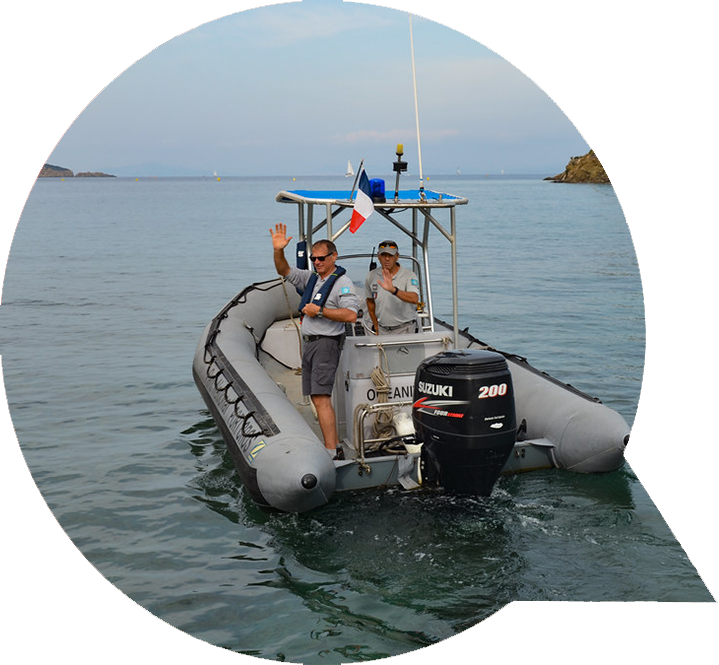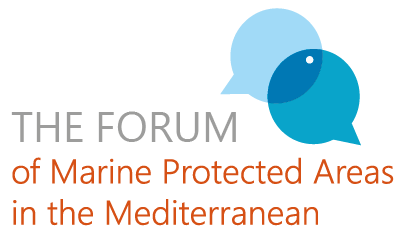STRATEGIC OBJECTIVE 2
Legislation and Enforcement
Strengthen national legislation and ensure effective enforcement mechanisms to produce better outcomes for MPAs

Recommendation 2.1 ENHANCED PROTECTION
Recalling the Tangier Declaration’s 2% target for no-take zones (Tangier Declaration, 2016 Mediterranean MPA Forum), increase the number and size of MPAs that include zones with enhanced protection levels (e.g. no-take, no- access, strictly protected), to contribute to the recovery of marine ecosystems, based on scientific data and community engagement
Strategies and Actions for Implementation
- Develop standards for establishing enhanced protection levels in MPAs
- Promote best practices in establishing enhanced protection levels in MPAs – including planning, implementation, monitoring and adaptation
- More high resolution field surveys and mapping of biodiversity using available technology and local knowledge in and around MPAs for consideration in identifying areas for enhanced protection
- Capacity building and training in establishing enhanced protection levels in MPAs
- Organise policy forums on enhanced protection levels in MPAs
- Adopt an adaptive strategy in the implementation of restrictive measures in MPA systems, for example using temporary measures, analysing the results, and adjusting as necessary to maximise benefits
Relevant Geographic Level
- National
- Regional (EU and Barcelona Convention)
- Local authorities
- MPA
- In areas with high biodiversity and/or high threats, including around islands
Priority Geographies for Implementation
While all countries should establish enhanced protection levels, priority efforts should be given for non-EU countries and countries establishing new MPAs
Responsible Parties
- National MPA authorities
- MPA managers
- MPA stakeholders, including fishers, divers, ferry boat companies, charter companies, sailors, shipping companies, military, coast guards, etc.
- Mediterranean scientific institutions
- UNEP/MAP – Barcelona Convention
- European Union
- Regional and international organizations
- Donors
- Networks of MPA managers (national, sub-regional, regional in the Med andconnection with other networks beyond the Med)
Indicators of Success
- Percent of total MPA area covered by enhanced protection zones
- Number and extent of new maps and field surveys that identify potential zones for enhanced protection
- Ecological benefit (spillover, catch per unit effort, etc.)
Recommendation 2.2 LAW/POLICY ON MPA CREATION
Enact, in each country, a law and policy on protected areas with specific reference to MPAs that describes the process to create, manage, enforce MPA regulations and monitor their conservation objectives and define an appropriate timeline for developing, updating and implementing management plans.
Strategies and Actions for Implementation
- Showcase case studies and best practices on MPA legislation and policies
- Develop a national multi-stakeholder task force to advise on the development, or updating, of MPA legislation and policy
- Capacity building on MPA legislation, comparative law and policy
- Develop regional guidelines to support this recommendation
- EU policy could mandate this as is currently the case with Natura 2000 sites
Relevant Geographic Level
- Regional
- National
Priority Geographies for Implementation
All Mediterranean countries currently without an MPA law with all the provisions listed.
Responsible Parties
- National governments
- European Union
- UNEP/MAP – Barcelona Convention
- IGOs and NGOs
Indicators of Success
- Existence of MPA law with all the provisions listed
Recommendation 2.3 MPA COMMITMENTS REFLECTED IN LEGISLATION
Ensure that regional and international commitments/obligations on biodiversity and related sectoral legislation are reflected in national legislation for marine protected areas and a governance model is adopted that avoids conflicting legislation issues.
Strategies and Actions for Implementation
- National biodiversity strategies should describe process and timeline for adoption of legislation that ensures conformity between regional and international commitments and national legislation on MPAs with clear provisions on conflicting legislation
- Development and adoption of national legislation that ensures conformity with regional and international commitments on MPAs with clear provisions on conflicting legislation
- Awareness raising on regional and international MPA commitments with legislators and other stakeholders
Relevant Geographic Level
- Regional
- National
Priority Geographies for Implementation
All Mediterranean countries.
Responsible Parties
- Legislators
- National governments (multisectoral)
- IGOs and NGOs
- UNEP/MAP – Barcelona Convention
- Networks of MPA managers (regional and beyond the Med)
Indicators of Success
- Number of countries with national legislation that reflects regional and international commitments on MPAs with clear provisions on conflicting legislation (same as indicator in 1.1)
Recommendation 2.4 BUILD CAPACITY FOR JUDICIARY AND ENFORCEMENT
Build the capacity of the judiciary and law enforcement authorities to improve their knowledge of MPAs and MPA-related legislation and their capacity to enforce legislation.
Strategies and Actions for Implementation
- Capacity building, experience-sharing workshops and training for judiciary and law enforcement authorities on MPAs and MPA legislation
- Development of guidelines to help judiciary and law enforcement authorities in the enforcement of MPA-related legislation
- Cooperate with existing national and international networks of prosecutors for raising awareness on MPAs and environmental protection among judiciary bodies
Relevant Geographic Level
- Regional
- National
Priority Geographies for Implementation
All Mediterranean countries.
Responsible Parties
- Governments
- National and international networks of prosecutors
- MPA law enforcement authorities
- IGOs and NGOs
Indicators of Success
- Number of capacity building and training events provided to judiciary bodies and representatives
- Number of law-related participants in capacity building and training events
- Number of countries having organised national capacity building and training events
Recommendation 2.5 ENFORCEMENT
Ensure effective and coordinated enforcement mechanisms that give MPA rangers and local authorities the legal means and powers to respond quickly and effectively to violations observedduring field patrols.
Strategies and Actions for Implementation
- Legal reforms, giving MPA rangers and local authorities the legal powers and means for enforcing violations.
Relevant Geographic Level
- National
- Local authorities
- MPA
Priority Geographies for Implementation
All Mediterranean countries.
Responsible Parties
- Legislators
- Local authorities
- Relevant national authorities
- MPA managers and rangers
Indicators of Success
- Number of countries where MPA rangers and staff have the legal power to enforce the MPA regulation
- Number of MPAs where local authorities and staff have legal authority to issue fines
- Number of violations effectively managed by MPA rangers and local authorities
Recommendation 2.6 CIVIL SOCIETY VIGILANCE
Encourage and promote civil society stakeholders to be involved in watching, vigilance, and informing about MPA violations and infringement and work together with authorities to curb them.
Strategies and Actions for Implementation
- MPA awareness and vigilance campaigns targeting civil society
- Awareness raising campaigns about MPA regulations and potential violations developed by the civil society and targeting the general public
- Develop a reporting systems for MPA authorities to acquire information about infractions from civil society stakeholders
Relevant Geographic Level
- National
- Local authorities
- MPA
Priority Geographies for Implementation
All Mediterranean countries.
Responsible Parties
- NGOs
- National environmental authorities
- Local authorities
Indicators of Success
- Number of MPA awareness and vigilance campaigns and mechanisms targeting civil society
- Number of citizens involved
- Number of MPAs with programmes to engage stakeholders in voluntary surveillance
- Decrease in the number of illegal activities carried out in the MPA over time after start of civil society vigilance programmes
- Monitoring of indicator species after the adoption of new protection measures after start of civil society vigilance programmes
